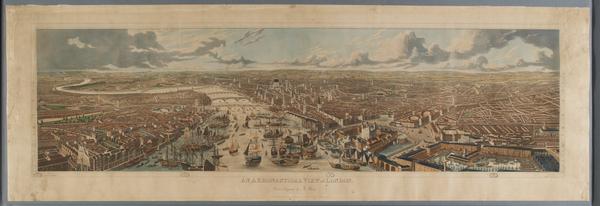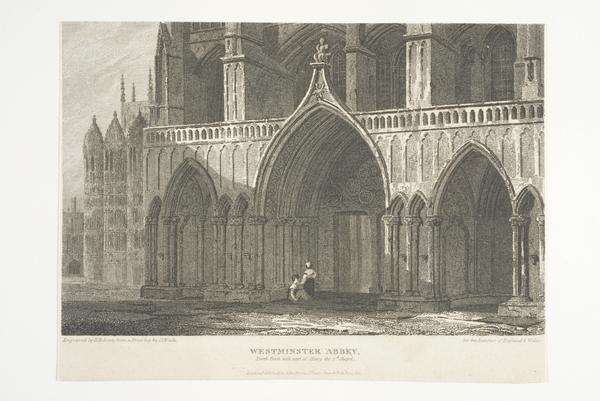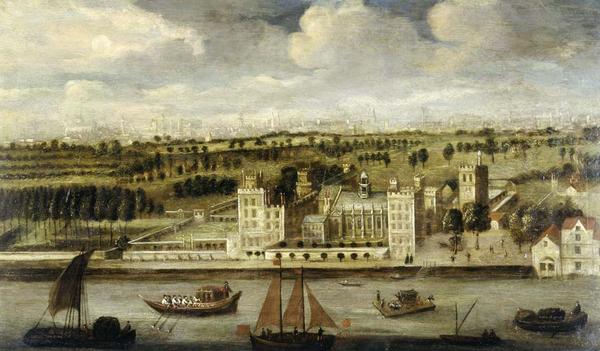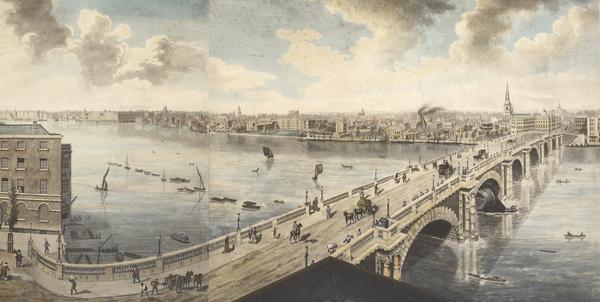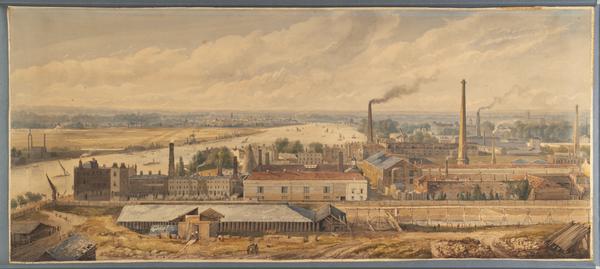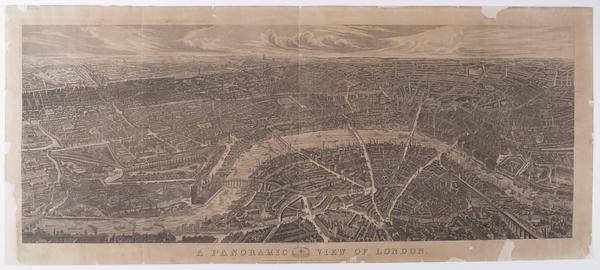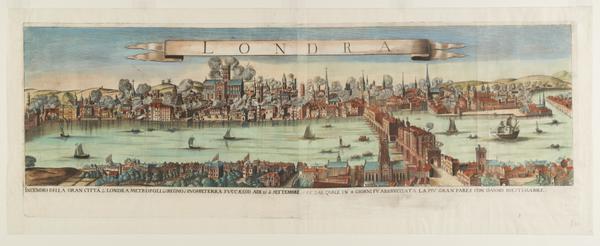The Prévost Panorama: See London in 1815
In 1815, panoramic artworks displayed in round buildings were a popular immersive attraction. Pierre Prévost’s 360-degree painting of London offers us an epic, large-scale view of the city as the Napoleonic Wars (1803–1815) drew to a close.
Westminster
1815

Looking west towards St James’ Park
Prévost, a French artist, visited London in late 1815. His panorama’s view is from St Margaret’s Church, in the shadow of Westminster Abbey. On the right of this section, cattle graze in St James’s Park. These cows supplied milk to much of west London. Middlesex Guildhall, in the foreground, is now home to the Supreme Court.

Looking north towards modern Trafalgar Square
The panorama was made 28 years too early to see Nelson’s Column in this view. Measuring 85cm high and 605cm wide, the Prévost Panorama is the largest image of London’s skyline in our collection. But it’s only the study for a now lost canvas. When Prévost’s larger panorama was displayed in Paris in a purpose-built rotunda, it measured around 32 metres in diameter.

A wagon delivering sacks
Just a few centimetres long, this tiny image of a horse-drawn delivery cart preserves a mundane scene from the streets of London which would have otherwise been lost.

Looking east towards the old Palace of Westminster
Prévost’s view focuses on London’s centre of political power. It contains one of the best depictions from the time of the Old Palace of Westinster, ruined by fire in 1834. Only Westminster Hall survives – the large expanse of roof seen here. Prévost’s work reveals an astonishingly low-rise city, punctuated only by church steeples and factory chimneys, and the dominant dome of St Paul’s Cathedral.

Carriages outside the old Palace of Westminster
Prévost didn’t just paint the buildings. He also captured details of London’s street life. These elegant horse-drawn carriages might have been used by wealthy peers or members of Parliament to travel to and from Westminster.

Looking south towards Lambeth
Here, the looming bulk of Westminster Abbey dominates the foreground. In the distance, the green fields of Lambeth are visible. The city was nowhere near its modern size, but London was still the grand capital of a world power. As this panorama shows, London was an object of fascination for both artists and curious international observers.

Westminster Abbey
While most of the buildings in the painting have changed dramatically in the last 200 years, Westminster Abbey is still recognisable.

Credits
The panorama was purchased by London Museum in 2018 with the help of the Art Fund, the Aldama Foundation and a group of individual donors, with additional support from Michael Spencer, the Leche Trust and other donors who wish to remain anonymous.



